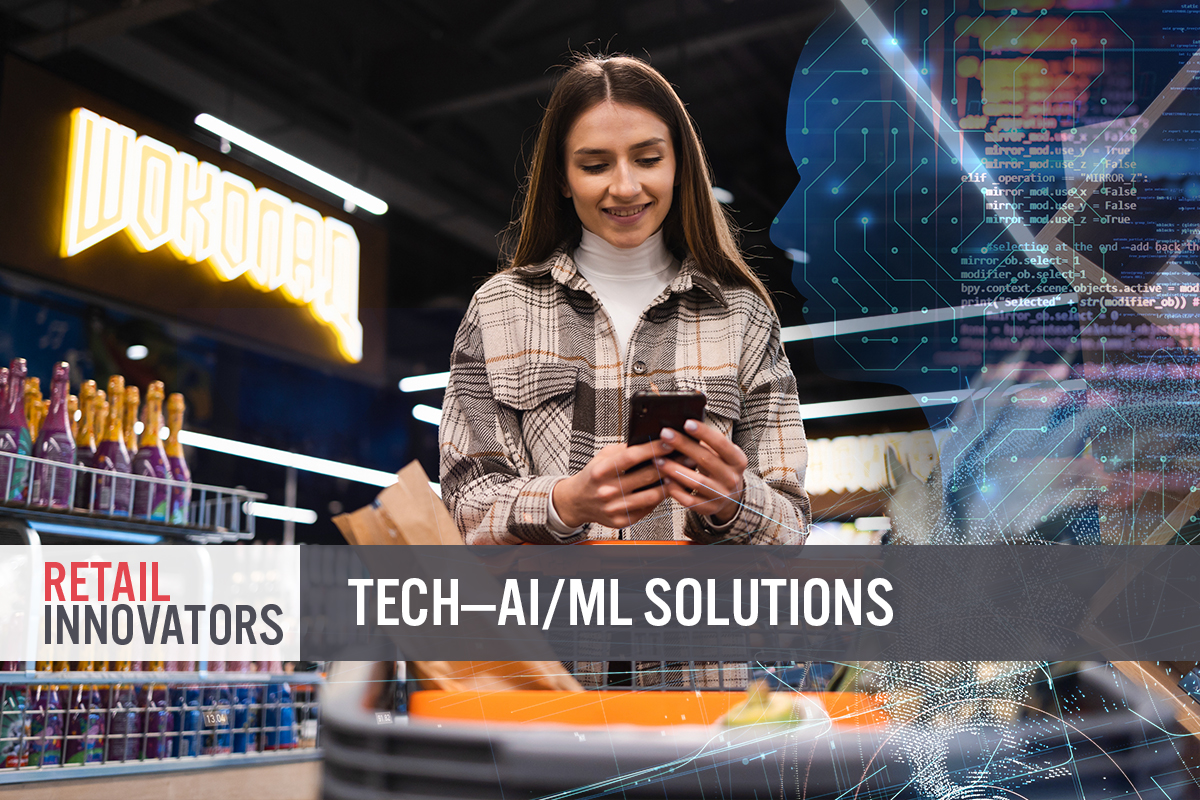
DIpil Das
Introduction
What’s the Story?As the world becomes increasingly digitalized, brands and retailers are turning to technology to improve operational execution and efficiency in order to remain competitive in the ever-evolving retail landscape.
As part of our Retail Innovators series, we present five companies that are disrupting the retail market with AI/ML (artificial intelligence/machine learning) technology innovations. We cover how each company has disrupted the market, as well as tailwinds and headwinds and the impact on traditional market players.
Why It MattersRetail is a highly competitive industry, and the level of competition has increased due to the entrance of e-commerce and data-driven retailers. Advanced technologies that leverage AI and ML can greatly benefit retailers across multiple business areas—from the supply chain and demand planning to pricing and marketing.
The scale and innate conservatism of retailers leads them toward large global software vendors, but there are several focused innovators that offer solutions with high performance, potentially giving those retailers an edge over their competition.
Retail Innovators—Tech: Coresight Research Analysis
In Figure 1, we provide an overview of the five retail technology innovators we discuss in this report.
Figure 1. Retail Innovators: AI/ML Technology Solution Providers [caption id="attachment_152598" align="aligncenter" width="700"]
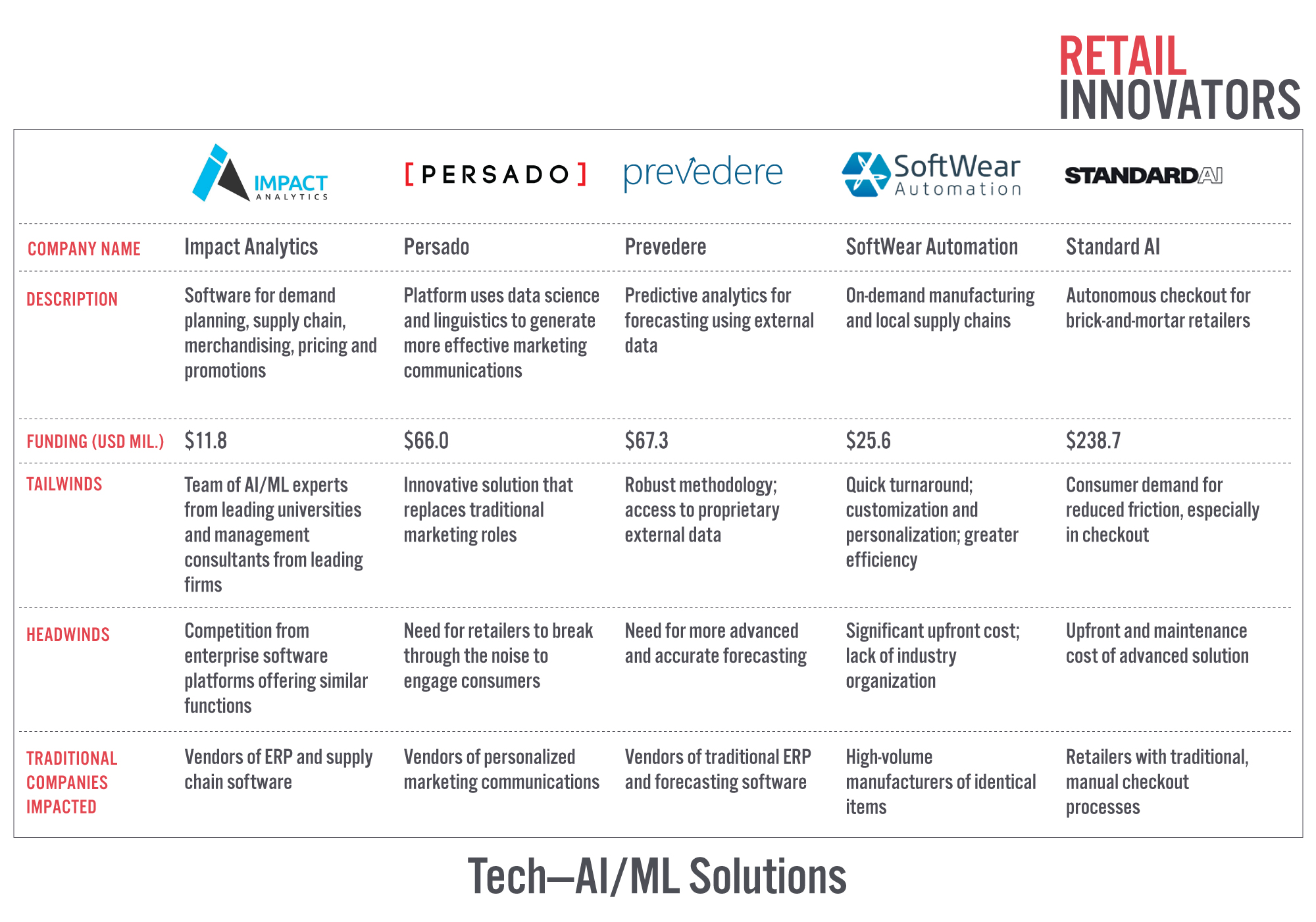 Source: Company reports/Coresight Research[/caption]
1. Impact Analytics
Source: Company reports/Coresight Research[/caption]
1. Impact Analytics
Impact Analytics offers software-as-a-service (SaaS) solutions that leverage AI/ML to perform demand planning, manage supply chains, merchandising, pricing and promotions, and offer business intelligence for the retail, CPG, hospitality and industrial manufacturing industries. The company also employs former management consultants to tie the solutions to business outcomes.
- Read Coresight Research and Impact Analytics’ report on the state of AI adoption.
Figure 2. Impact Analytics: Key Facts [wpdatatable id=2150 table_view=regular]
Source: Crunchbase/Coresight Research
How Has Impact Analytics Disrupted the Market?
Impact Analytics has developed a dedicated software solution centered on demand forecasting, plus related tangential areas, which offers a performance advantage versus other generic software platforms.
Competitive Advantages
Impact Analytics’ competitive advantages lie in the intellectual firepower delivered by its team of former retailers, CPG managers, data scientists and product engineers, as well as in its strategy of hiring former management consultants from leading firms, which ensures that its software achieves desired business outcomes.
Headwinds and Tailwinds
General headwinds for all companies discussed in this report include the moderation of the initial stages of the pandemic, which could cause retailers to take a pause on their technology plans to reassess their situation, in addition to a still-shifting demand environment. Moreover, the disruption from the current inflationary environment and the looming possibility of a recession could cause companies to take a cautionary approach with regard to future IT projects.
For Impact Analytics specifically, being an innovator with a focused product line, one headwind is that the company is competing with large, global software vendors that offer broad solutions, which could lead customers to remain on their platform to cover multiple operational areas.
However, there is increasing urgency for retailers to get a handle on demand forecasting, since it has enormous implications for inventory accuracy, operational efficiency, working capital utilization and, most importantly, customer satisfaction. Many consumers continue to minimize the number of shopping trips they make, seeking to make fewer, comprehensive trips, and key items (or close substitutes) being out of stock can lead the customer to leave the store without making a purchase, never to return.
Impact on Traditional Players
Traditional enterprise software players, with their broad-based product portfolios, are unlikely to be the leader within every single software category, and these functions could be replaced by leaders in those specific categories. Since demand forecasting, in our view, represents the central function of supply chain and inventory management, retailers would be well served by choosing a vendor that has a leading team with an intense focus on this operational area.
In addition, while platform vendors have an interest in encouraging their customers to remain on their platform, retailers today operate myriad platforms from many vendors, and the modularity of current software enables them to mix and match at will.
[caption id="attachment_152403" align="aligncenter" width="700"] Screenshot of an Impact Analytics demand forecasting dashboard
Screenshot of an Impact Analytics demand forecasting dashboard Source: Company reports [/caption] 2. Persado
Persado’s team of NLP (natural language processing) experts, data scientists, linguists and marketing experts have created a sizable knowledge base of scored words and phrases that drive growth for businesses. The company claims that it has delivered 100 million messages to date (as of mid-2022), from which it calculates a 41% increase in conversion across customer engagement channels, driving incremental revenues and differentiated brand interactions.
Persado calls its platform “Motivation AI,” which refers to “the capability of a machine to identify, leverage and make use of factors to emotionally engage individuals and activate behavior.”- Read Coresight Research and Persado’s report on AI-powered language.
Figure 3. Persado: Key Facts [wpdatatable id=2151 table_view=regular]
Source: Crunchbase/Coresight Research
How Has Persado Disrupted the Market?
Consumers are inundated with non-personalized communication in emails and text messages that do not pique their interest, and may even annoy them. Persado’s solution generates messages that elicit a positive response from consumers, supporting brands’ relationships with their customers.
Competitive Advantages
Persado’s platform leverages its expertise in language, marketing and data science to determine the exact words or phrases that drive conversion and engagement, with effectiveness documented by statistics.
Headwinds and Tailwinds
Persado’s headwinds include the difficulty customers could have in understanding its combination of language and data science, and that marketing communications are typically managed by professionals with liberal-arts backgrounds, rather than data science. Furthermore, while there are other platforms offering AI-based personalization and customization, Persado is unique in its deep application of linguistics and data science.
Tailwinds driving customer interest and demand include the fragmentation of consumer attention across multiple channels—thus requiring impactful, unique language for each channel—as well as increasing consumer frustration and “tuning out” marketing communication that is uninteresting and non-personalized, which is likely to drive unsatisfactory conversion rates.
Impact on Traditional Players
Traditional players with simpler, generic solutions could see them replaced by higher-performance, targeted solutions that use more relevant language to attract and keep customers’ interest. Retailers using solutions that achieve higher conversion rates are likely to outperform those that rely on traditional methods for marketing communication.
[caption id="attachment_152404" align="aligncenter" width="700"]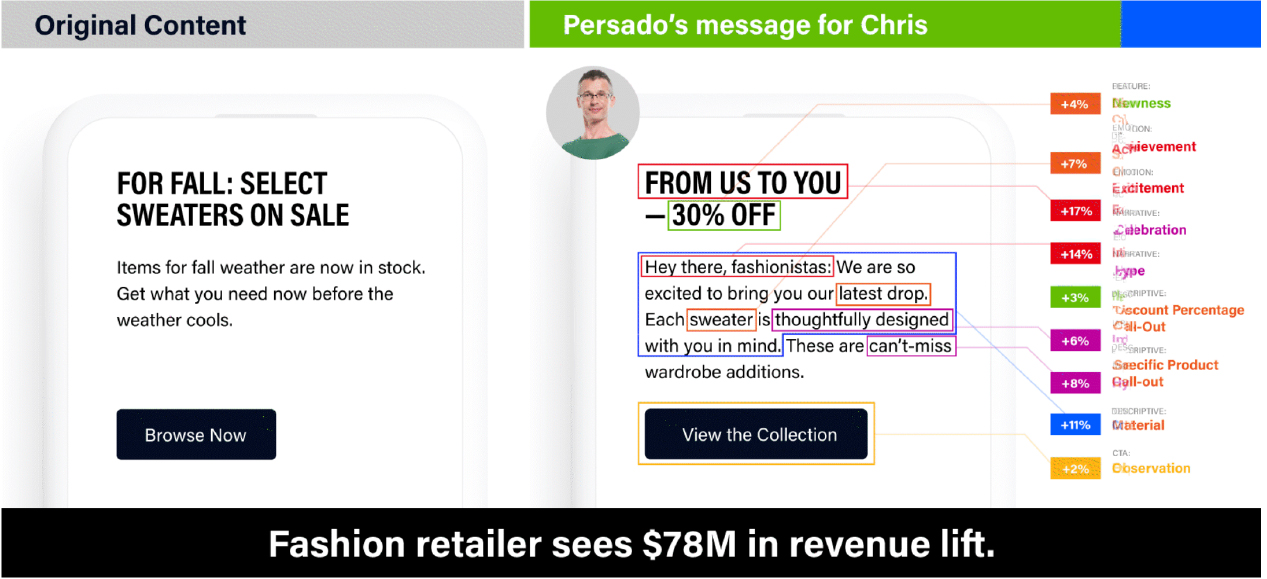 Sample recommendations for language changes by Persado
Sample recommendations for language changes by Persado Source: Company reports [/caption] 3. Prevedere
Prevedere offers data and technology for advanced predictive planning. Its cloud-based engine identifies relevant external factors, creates forward-looking predictive models, uses “what-if” analysis to evaluate future conditions and monitors the environment to determine future market shifts, to help enterprises make better business decisions.
The functions of Prevedere’s platform include financial planning and analytics, category and brand management, sales planning and forecasting, demand planning and forecasting, and tools for data science and analytics, serving the CPG, retail, travel/hospitality, manufacturing, automotive and private equity industries.
- Read Coresight Research and Prevedere’s report on planning and forecasting processes in retail.
Figure 4. Prevedere: Key Facts [wpdatatable id=2152 table_view=regular]
Source: Crunchbase/Coresight Research
How Has Prevedere Disrupted the Market?
Retailers and other enterprises that use advanced forecasting tools, particularly those that leverage external data, have a strong competitive advantage versus enterprises that use traditional forecasting tools that rely on backward-looking historical data. Moreover, companies that specialize in forecasting methodologies will likely offer more powerful and accurate forecasting tools than generic tools built into large software platforms.
Competitive Advantages
Prevedere uses patented technology to identify relevant external factors and create forward-looking econometric models. The incorporation of external data increases the accuracy of forecasts versus traditional ML models based on historical data. Moreover, its platform includes thousands of data sets from external sources via its Global Intelligence Cloud.
Headwinds and Tailwinds
Headwinds include the challenge of convincing retailers and other enterprises to migrate to high-performance, targeted tools rather than make use of the forecasting tools built into existing platforms.
The major tailwind is the need for increased forecasting accuracy in an environment of volatile consumer demand and heightened competition arising from data-driven global enterprises. As mentioned above, demand forecasting accuracy drives inventory, pricing and, ultimately, customer satisfaction.
Impact on Traditional Players
Traditional players with traditional forecasting solutions that do not use AI/ML-based models or incorporate a robust set of external data will likely see their solutions replaced with advanced forecasting solutions.
[caption id="attachment_152405" align="aligncenter" width="699"]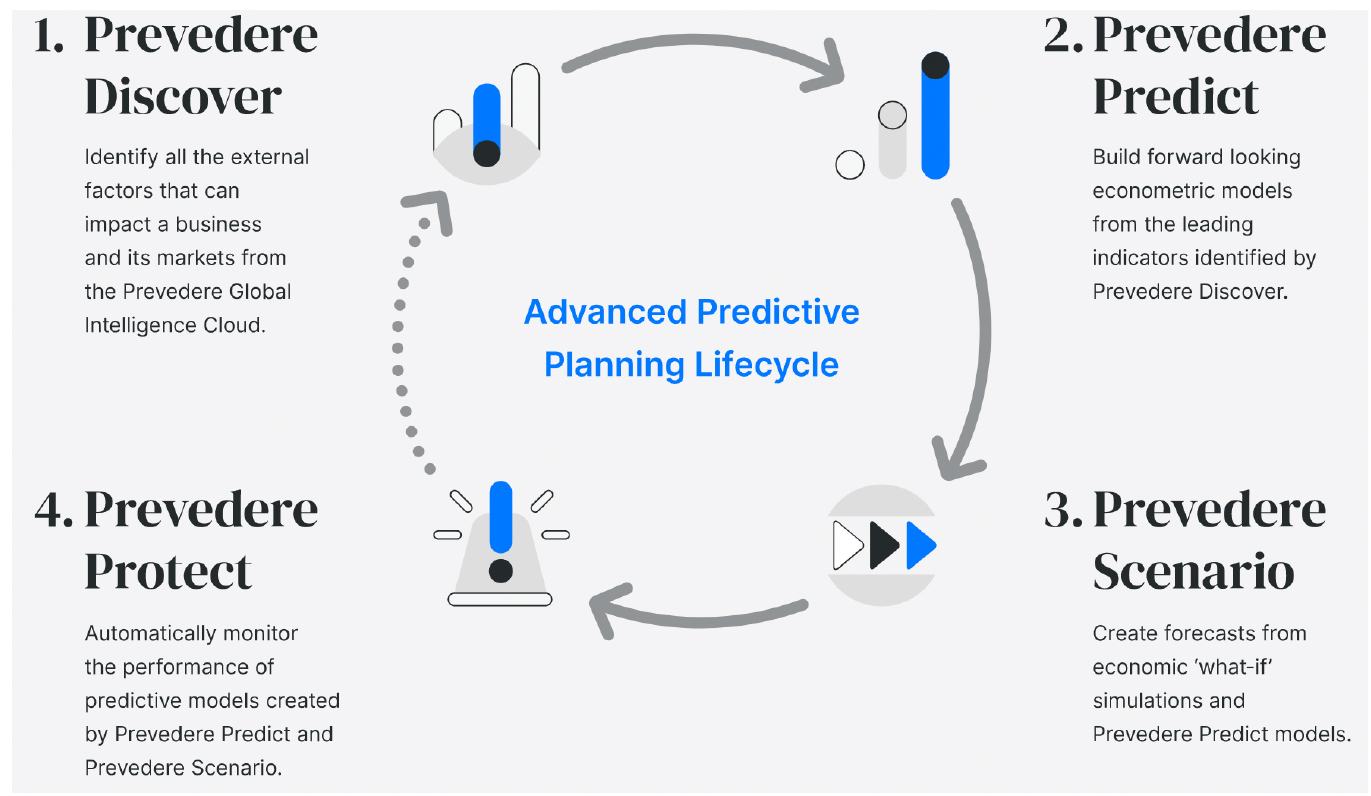 Overview of key platform modules
Overview of key platform modules Source: Company reports [/caption] 4. SoftWear Automation
SoftWear Automation’s automated manufacturing equipment, “Sewbots,” use computer vision and enable the creation of on-demand, made-to-measure, local supply chains that can process orders of any size for T-shirts within 24–48 hours, according to the company.
- Read Coresight Research and SoftWear Automation’s report on the on-demand manufacturing revolution in apparel.
Figure 5. SoftWear Automation: Key Facts [wpdatatable id=2153 table_view=regular]
Source: Crunchbase/Coresight Research
How Has SoftWear Automation Disrupted the Market?
Traditional retailers and brands stock inventory of goods that are typically manufactured overseas, which face lead times that measure in the months. In that intervening time, product can go out of style and retailers can be left with inventory in the wrong style or size, which must be liquidated or disposed of in landfill. On-demand manufacturing enables retailers to manufacture only what is needed, personalize or customize the items, and make the goods available within a much shorter timeframe, staying in step with fashion trends.
Competitive Advantages
SoftWear Automation’s advantages include the use of computer vision in the manufacturing process, which helps ensure accuracy and quality, with the application of automation offering the scale to produce greater quantities of garments. The company believes that its platform is able to manufacture at a cost that is competitive with low-wage countries, and the 24- to 48-hour manufacturing time greatly exceeds what is possible using overseas manufacturing.
Headwinds and Tailwinds
Headwinds to on-demand manufacturing include the emerging nature of this concept, and there is currently no industry organization to connect and coordinate manufacturers and brands. In addition, there are few manufacturers, so capacity is small with regard to the needs of large brands. Finally, microfactories require upfront investment to acquire the equipment and facility, as well as to maintain it.
There are several tailwinds supporting on-demand forecasting. First of all, trade disputes, port congestion and shutdowns due to the pandemic have extended lead times and hampered the availability of products, leading to shortages. Consumers are increasingly desiring personalized and customized products that can be manufactured and shipped quickly from microfactories. Finally, due to their smaller size and scale, microfactories use fewer resources, such as material and electricity, with less waste, which improves their sustainability profiles.
Impact on Traditional Players
The traditional overseas manufacturing model remains appropriate for large quantities of identical items, but brands could increasingly turn to microfactories to be more responsive to customer desires for customization and personalization, and to stay in line with fashion trends, as well as handle supply-chain issues.
[caption id="attachment_152406" align="aligncenter" width="701"]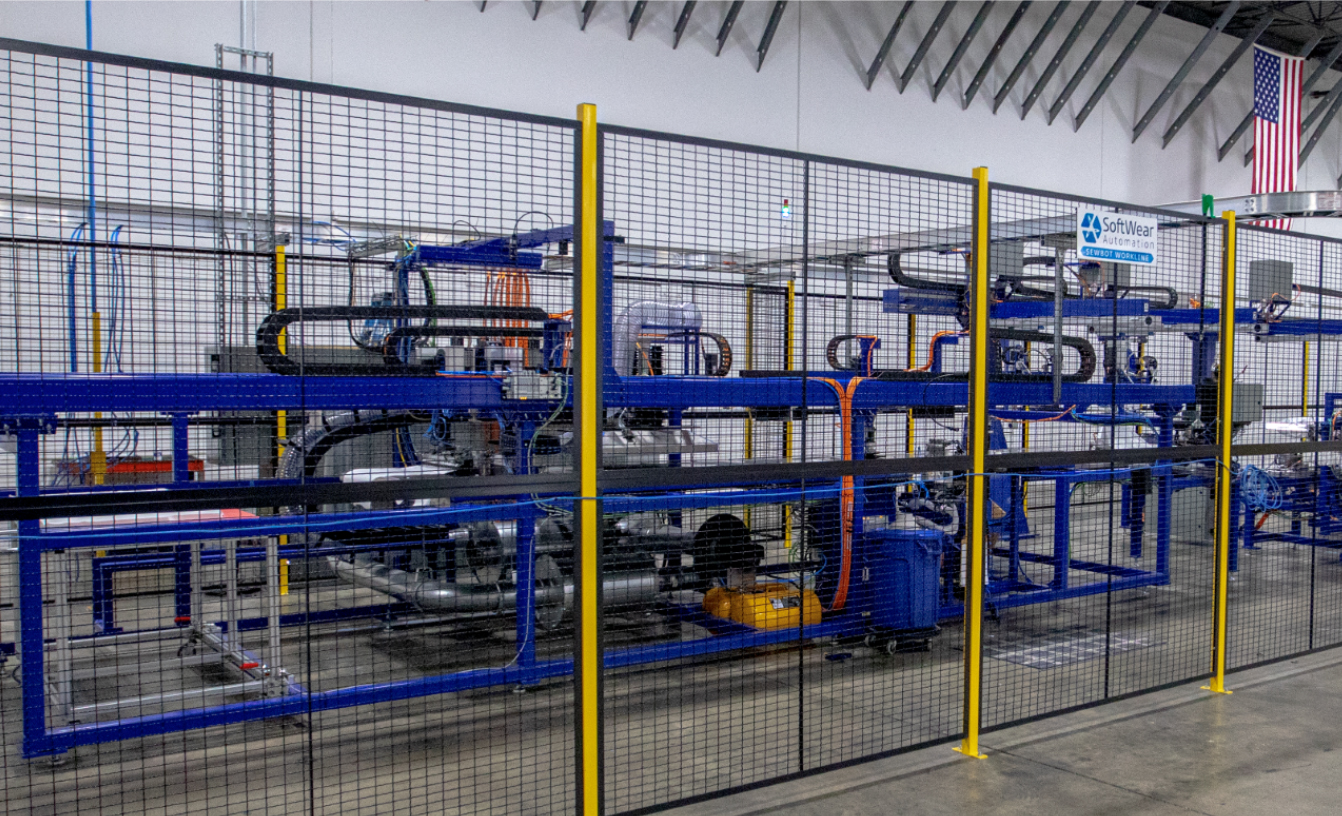 Apparel manufacturing line
Apparel manufacturing line Source: Company reports [/caption] 5. Standard AI
Standard AI offers an AL/ML-powered computer vision solution that provides autonomous checkout (i.e., unstaffed stores or “just walk out” technology) for existing brick-and-mortar stores.
- Look out for Coresight Research and Standard AI’s report on autonomous checkout technology.
Figure 6. Standard AI: Key Facts [wpdatatable id=2154 table_view=regular]
Source: Crunchbase/Coresight Research
How Has Standard AI Disrupted the Market?
Retailers are exploring solutions that incorporate computer vision to reduce friction in the checkout process and to adapt to the current environment with staffing shortages.Competitive Advantages
In contrast to solutions from other vendors that require an autonomous store to be designed as such from the ground up, Standard AI uses its computer vision platform to transform existing brick-and-mortar locations into autonomous stores. The company also benefits from the long-term trend of software steadily becoming more powerful (as computing power becomes more ubiquitous and cheaper over time) and from other advances, such as camera technology steadily improving and becoming less costly due to the proliferation of smartphones.
Headwinds and Tailwinds
Headwinds to the adoption of autonomous stores include the early stage of its deployment, along with the initial investment in the platform and continuing investment in maintenance and software upgrades. At present, Amazon has opened several Amazon Go convenience and Amazon Fresh grocery stores, but there is otherwise only a small number of deployments of unstaffed stores to validate the technology for retailers.
Tailwinds supporting unstaffed stores include consumers’ frustration with the friction presented by the checkout process, including the time spent waiting to check out. Consumers have long been accustomed to pushing the checkout button online, yet there are few analogs in physical stores. In addition, the current staffing shortage is making it difficult for retailers to find enough workers to maintain store hours and keep stores open, and demographic shifts—in Japan, for example—have brought a government mandate to automate convenience stores to keep them operating.
Impact on Traditional Players
Once autonomous stores are more commonplace, consumers could prefer them, as they greatly reduce waiting times and friction in the checkout process. Moreover, the technology is being applied beyond convenience to grocery and other types of retail stores.
[caption id="attachment_152407" align="aligncenter" width="699"]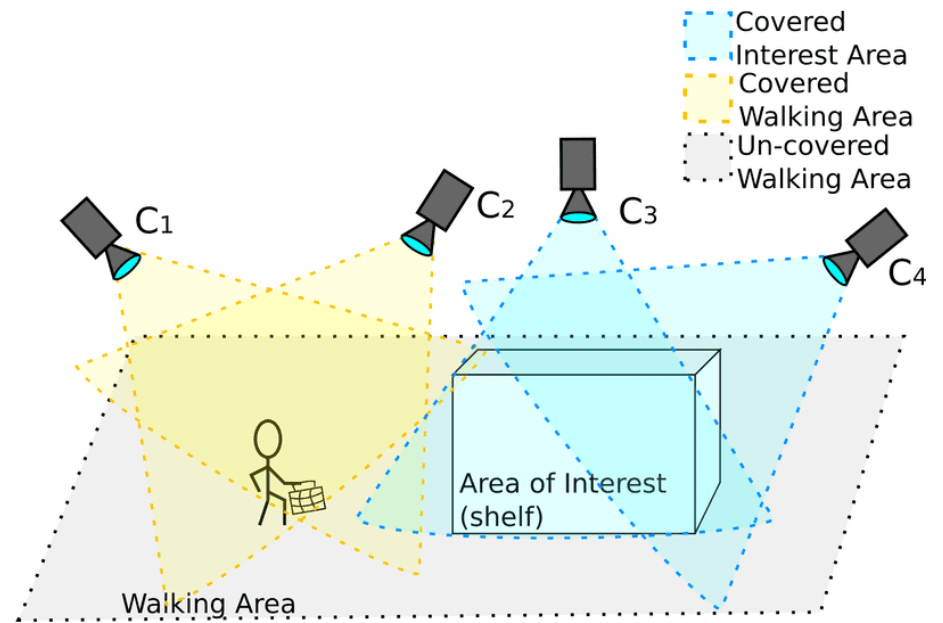 Concept image of a retail environment covered with just four cameras
Concept image of a retail environment covered with just four cameras Source: Company reports [/caption]
What We Think
The appeal of AI/ML is increasing due to the ever-decreasing price of computing power, driving improvements in the capabilities of software, in addition to decreases in the cost of computer vision hardware, such that their deployment is becoming “table stakes.” Although there are many broad-based software platforms that offer many of the functions discussed in this report, the innovators discussed here have focused exclusively on their core functions, and the interoperability of modern software lets retailers and other enterprises mix and match platforms.
Implications for Brands/Retailers
- As software development is not their core business, retailers and brands can benefit from the efforts of innovators offering AI/ML solutions.
- While large retailers and brands will likely have access to AI/ML modules and libraries, intensely focused innovators can offer more advanced, higher-performance solutions which can create a competitive advantage.
- Modern software (especially cloud platforms) is more modular and interoperable, enabling mixing and matching vendors.
Implications for Technology Vendors
- Retailers continue to be under pressure from competition and from rapidly evolving markets and can benefit greatly from advanced solutions.
- AI/ML software continues to improve at a rapid rate, with the decreasing cost of computing enabling higher-performance solutions.